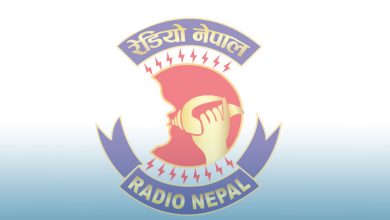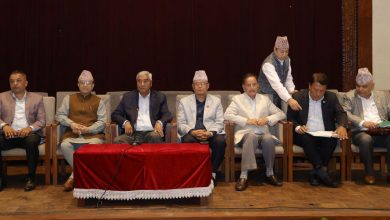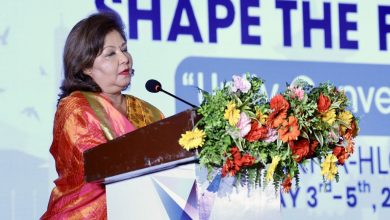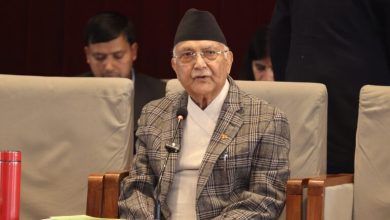Protect press freedom to ensure functional democracy, says report
Kathmandu, May 2: At a time when the World Press Freedom Day (May 3) is being observed across the globe, the media fraternity in Nepal is haunted by the horrible death of an on-duty journalist, Suresh Rajak, in a protest occurred in the federal capital, Kathmandu, a month back.
The incident took place on March 28 when a pro-monarchy protest went out of control.
Talking to the RSS at that time, Central General Secretary of the Federation of Nepali Journalists (FNJ) Ram Prasad Dahal dubbed the incident a culture of undemocratic forces.
It may be noted that in addition to the killing of Rajak, demonstrators also vandalized the Annapurna Media Group building at Tinkune, set it on fire, attempted a forced entry into the Kantipur Television building, and threw stones, causing terror in the newsroom. A vehicle owned by Himalaya Television was also damaged.
The killing of journalist, Suresh Bhul in Sudurpachim Province was another significant incident painting grim picture of Nepali media last year. This incident however got less attention because it took time to ascertain whether Bhul was a journalist, according to a report.
Subsequently, reporter with the Prime Time Television, Sabina Karki, got severe injuries to her eyes while covering a protest in Kathmandu on April 27. She was injured by the water cannon thrown by the police targeting the mob as it tried to enter the restricted area. She has been undergoing treatment at Tilganga Eye Hospital.
These incidents have been highlighted in the report launched by Freedom Forum on the eve of the World Press Freedom Day.
The annual media monitoring report highlights a rising trend in anti-press incidents with little progress in lawmaking, horrible incidents that took lives of on-duty journalists, and growing intolerance towards media professionals and press freedom.
Press freedom violation on rise
FF stated that it recorded 68 incidents of press freedom violation from May 1, 2024 to April 30, 2025 in Nepal, where total 88 media persons- 77 male and 11 female journalists, including eight media houses were directly affected. The graph of violations is higher than of the previous year as they numbered 60.
The Freedom Forum has sought cooperation from multiple sectors to create thriving media presence.
Categorically, the report featured violation incidents into seven types: two cases of killing of journalist, two court cases against journalists, two arrest/ detainments, six misbehaviours, seven obstructions/ vandalism, 24 assaults and manhandles, and 25 threats and death threats combined. Bagmati Province, having the federal capital, Kathmandu, witnessed the highest number of anti-press incidents.
Chief Executive of Freedom Forum and former president of FNJ, Taranath Dahal, observed, “The killings of journalists have reminded us the horrible past. Well-equipped journalists and free press with favourable atmosphere of human rights promotion and laws are essential for Nepal’s democracy at present. Journalists cannot play watchdog role if they face attack and threats continuously.”
He stressed the need for robust safety protocols from government agencies, along with improved coordination by media houses, ensuring that reporters receive adequate training and have skills for personal risk assessments when covering protests.
Kamala Panthi, Chairperson of Sancharika Samuha—a forum of women journalists and communicators—expressed serious concern over recent attacks on the media, the deaths of journalists, and the severe injury suffered by a female journalist.
She argued that these incidents are not only condemnable but also raise serious concerns about the threat to press freedom, freedom of opinion and expression, and the human rights of women.
Highlighting the need of the State’s responsibility to protect the press freedom, Panthi also stressed the need to orient and encourage journalists to use tools that help de-risk the reporting environment, while also prioritizing their physical safety. “During the conflict, we were aware of and used safety tools. Now, the gaps in continuing such strategies have become evident,” she said.
Speaking on the case of journalist Karki, she said that women journalists are only beginning to establish themselves in media, and such incidents risk discouraging potential newcomers and snatching the confidence of those already in the profession to explore their further potentialities.
Panthi also called for an end to interference in the press freedom and urged for collaborative efforts to build an environment conducive for further advancement of the press freedom.
Positive trend
However, the report has observed some positive developments like the formation of Public Service Broadcasting and the expansion of freedom of expression (FoE) and journalists’ safety mechanism of the National Human Rights Commission (NHRC) in the province levels. However, their effective operation and visibility is sought by it.








Comments